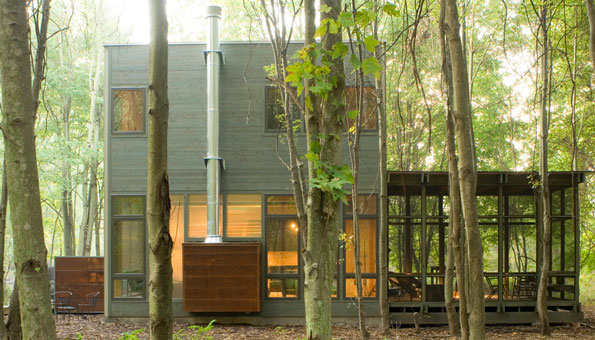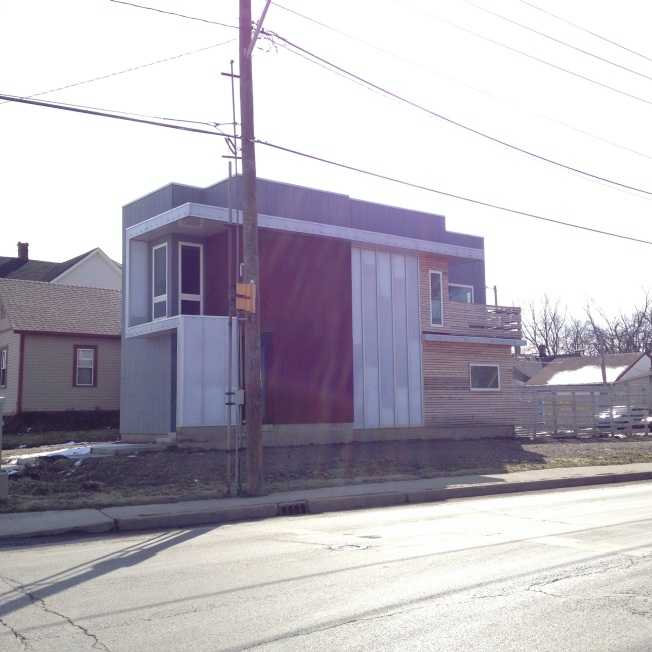As you may or may not remember, I had previously mentioned I was in the process of purchasing a vacant lot on Lexington Street in Fountain Square. After unforeseen circumstances involving existing unpaid demo fees on that lot, the brokerage firm was unable to sell the lot. As a result of this, I was forced to move on and continue the search for a suitable lot for my own house in Fountain Square.
This search for a vacant piece of property in Fountain Square has not necessarily been an easy one. Vacant lots on the open market are few and far between, so I’ve found it takes a little more digging and determination to find a piece of property. Alas, I have discovered my lot (a fantastic one…I might add), and the quest to build my own home continues.
The new lot location is on the west end of Hosbrook (955 Hosbrook) and is quite unique to Indianapolis (not 100% unique to Fountain Square though). Why is it unique? Simply put, it’s 1600 square feet. Yes, 1600 square feet for the entire lot (it seems many of the homes built today have a footprint of 1600 square feet, let alone the entire lot being this size).


Now, you may be wondering why I would be so interested and committed to building on such a small piece of property, but really, there are plenty of reasons to justify the lot.
The location is great.
The property shares an alley with the north side of Virginia Ave, meaning I am adjacent to the main commercial drag in the neighborhood. This means quick access to restaurants, bars, art galleries, the cultural trail, etc. I think you get it. All of the reasons Fountain Square is so great. It’s a completely walkable neighborhood, and this lot takes full advantage of this fact.
The view is great.
Because of the wonderful introduction of the interstate system through downtown Indianapolis (this is obviously sarcasm here), This property ends up with an uninterrupted view of downtown Indy (not dissimilar from the Shelby Street house). Further, you get nice views up Virginia Ave into Fletcher Place and Holy Rosary as well.

(Google Street View will have to do for the moment)
The neighborhood is great.
Fountain Square is definitely on the upswing, the residential areas are no different. This lot on Hosbrook actually sits within the small hood known as North Square. It’s a really great location as North Square has a small but active neighborhood association and has a great mix of people in the neighborhood. Also, it’s great to see the mix of architectural styles in the neighborhood and openness to new and contemporary ideas about home design.
The lot essentially forces the belief in house size and scale.
To me, this is by far the number one reason I love this lot. It’s a 20 foot wide lot (give or take a couple feet…waiting on the official survey), something not often seen in the flat and sprawling city of Indianapolis. Fountain Square, however, has a much higher concentration of these 20′ lots than most other parts of the city. Much of Fountain Square developed as a more working class neighborhood, resulting in much more modest homes, and often modest meant smaller in scale. As a result, the shotgun house typology was one often turned to for new homes in the neighborhood, and these were most often built on 20′ lots.
Further, not only is the lot narrow, it’s shallow (less than 80′ deep). Because of the way the street grid works, with Virginia being one of the four spokes out from Monument Circle, you end up this narrowing condition as one moves west along Hosbrook Street, each lot becoming shallower and shallower. This lot being at the west end of the street, is one of the shallowest lots on the street, and probably within the entire neighborhood.
I actually love these constraints. I often find the constraints open up new ways of thinking about design. They force us into a set of parameters, and these parameters are foreign to our typical day to day design processes. As a result, the design will necessarily be specific to its location and given condition, and will take advantage of these constraints (these constraints become opportunities to re-imagine the house and re-envision it).
It is my hope that with this house we can continue the discussion on how we live and how size factors into this. We have become so much a society built on material goods, constantly bombarded with advertising, products, electronics, etc. While I am not much different from the average person and often fascinated by many of these products, I want this house to be a testament to a smaller, more simple way of living, stripping the house of much of its unnecessary square footage and better understanding how to efficiently use space.
As you probably already guessed, I have been hard at work scheming away, and am definitely liking the direction the design is going. There are a number of factors at play with the design, beyond its site, including cost, materiality, form, scale, size, etc. As I continue to work through these schematics I will most definitely share these with you. Look for some plans in a few days (as I am almost set on their direction).























